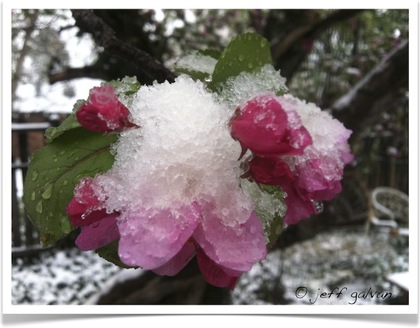All the trees are in full bloom early this year and the plants and fruit trees are being pollinated by the wind, butterflies, bees and other insects.
So what happens when there is a cold snap? 
Well, depending on how cold it gets, the temperature may determine how much fruit is produced this year.
When the trees and plants flower they produce nectar which attracts bees and other insect. Pollen clings to the insects gathering nectar and when they fly from flower to flower the stigma receives the pollen.
Once the plants are pollinated the petals will fall away and the stem that the flower was attached to will begin to swell, eventually producing a fruit. If the flowers bloom and then there is a sudden cold snap, the flowers fall away before the process of fertilization is complete.
This is one of the main reasons here in the Rocky Mountain region we rarely get apricots. Apricot trees are one of the first to bloom in the early spring.
Often, there is a cold snap that happens soon after those first really nice, warm days. This year is unusual in the way all the trees have already flowered in March, blossoms that we would not normally see until the middle of May are already blooming.
The photos above are from a crabapple tree in our backyard. You definitely want to check out what happened to those apples.
Boulder Tree Care is committed to helping you care for your trees by providing articles that cover lessons we are learning daily while providing tree care in Boulder, Colorado.